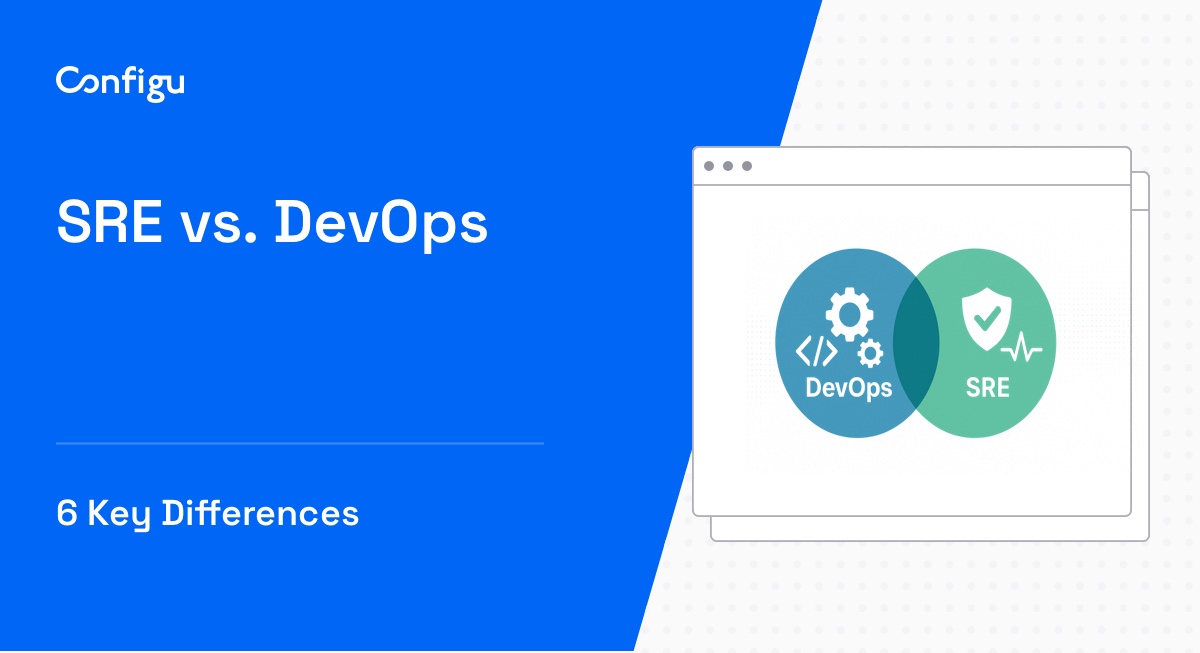What Is dotenv?
Dotenv is a zero-dependency library or module that exists in most programming languages, which loads environment variables from a .env file for easier management. With Dotenv, you can have a dedicated file where you store all your environment variables, and then they get automatically loaded into the runtime environment.
For example, if you are working with Node.js, the .env file will be converted into process.env, which is a global object that provides access to all available environment variables.
You don’t have to make any changes to your code to start using Dotenv. You install the module (if not built into your programming language), create a .env file, specify your environment variables in this file, and Dotenv handles the rest. You can then access these variables anywhere in your code through the dedicated file.
An important point about Dotenv is that it doesn’t overwrite existing environment variables. This means that if you have an environment variable that’s already defined in your system, Dotenv won’t touch it. This is particularly useful when you’re working with sensitive data like API keys or database credentials that you don’t want to expose in your code.
This is part of an extensive series of guides about software development.
In this article:
Why Use dotenv?
Here are a few benefits of using a Dotenv module or library in your programming language of choice:
- Centralized configuration management: Dotenv centralizes your configuration management into one file. Without Dotenv, you’d have to scatter your environment variables throughout your code, which can quickly become messy and hard to manage.
- Improved security: All applications use sensitive data like database credentials, API keys, and other secrets that you don’t want to expose in your code. By storing these secrets in the .env file, Dotenv ensures that they’re not exposed in your code and are not checked into version control. However, keep in mind .env files are not completely secure because they store information in plaintext.
- Easy environment switching: With Dotenv, switching between different environments (like development, testing, and production) becomes easier. Instead of manually changing your environment variables for each environment, you can create different .env files for each environment.
What Information Can Be Stored in .env Files?
Here are a few examples of information you can store in your .env files and use in your environment variables:
- Application settings: You can use the
.envfiles to store settings like port numbers or logging levels. These settings often vary between different environments, so storing them in the .env file allows you to easily switch environments without having to change your code. - Feature flags: These allow you to toggle features on and off without having to redeploy your application. By storing your feature flags in the
.envfile, you can easily manage and update them. This is particularly useful when you’re testing new features in development or staging environments before rolling them out in production. - Database connection strings: These strings often include sensitive information like the database hostname, username, and password, which you don’t want to expose in your code. This also lets you change your database connection details without having to update your code.
- API keys and credentials: API keys and credentials are another type of sensitive data that you don’t want to expose in your code. By storing these keys and credentials in the
.envfile, Dotenv allows you to keep them separate from your code and easily accessible.
Important note: Storing credentials, and other sensitive data, in an .env file, is safer than saving them in your source code, but is also not secure. Anyone with access to your environment will be able to view and compromise the information. This is why it’s important to store sensitive data using a secrets management or configuration management system (like our very own Configu), which can encrypt and control access to sensitive information.
Tips From the Expert
In my experience, here are tips that can help you better manage environment variables with dotenv:
-
Leverage fallback mechanisms for missing variables When using dotenv, ensure your application gracefully handles missing variables by implementing default values or raising alerts. This prevents runtime errors and improves resilience, especially in multi-environment setups.
-
Automate environment variable loading for local development Use tools like
direnvor Docker Compose to automatically load your.envfiles when starting a development session, reducing manual steps and ensuring consistency across team members. -
Integrate dotenv with CI/CD pipelines In CI/CD environments, use dotenv for local development but switch to environment-specific secrets managers (e.g., AWS Secrets Manager) during deployment. This ensures that sensitive information is tightly controlled without relying on plaintext
.envfiles in production. -
Use environment variable validation libraries Employ validation tools (like
envalidfor Node.js) that ensure all required environment variables are set and properly typed, providing early feedback during development and avoiding runtime surprises. -
Dynamically generate
.envfiles for containerized apps For Docker or Kubernetes-based apps, consider dynamically generating.envfiles from templates or configuration management systems during container startup. This allows for flexibility and reduces hardcoding in.envfiles.
Using dotenv in Common Languages and Frameworks
Important note: In all languages and frameworks, it’s crucial you don’t commit the .env file to version control. Instead, include it in your .gitignore file to avoid potential security risks.
dotenv with Node.js
If you’re a Node.js developer, integrating Dotenv into your development process should be easy. First, you need to install the Dotenv package using npm. Once installed, you can require the package at the top of your entry point file—usually index.js or app.js. With a simple require('dotenv').config(), you’re all set to use environment variables in your application.
However, remember that these variables are loaded at runtime, and any changes made to the .env file after the app has started won’t be picked up until the app is restarted.
While Dotenv provides a .env.example file to help you maintain consistency across different environments, this file should only illustrate the structure of your environment variables, without the actual values.
Learn more in our detailed guide to node dotenv (coming soon)
dotenv with Python
In Python, install the Dotenv package using pip or pip3. Once installed, you can import the module at the start of your application. Use load_dotenv to load your environment variables, and you’re ready to go.
In Python, you use os.getenv to fetch the environment variables. If the variable isn’t found, None is returned, so it’s crucial to add necessary checks to your code.
Learn more in our detailed guide to PY dotenv
dotenv with Javascript
In a Javascript project, install the Dotenv package using npm or yarn, and then require the package at the top of your entry point file. Use config() to load your environment variables.
When using Dotenv with Javascript, bear in mind that environment variables are loaded at runtime and won’t be updated until the app is restarted.
dotenv with React
For React projects, you don’t need an additional package: create-react-app already comes with built-in support for environment variables. However, all your environment variable keys must start with REACT_APP_.
Your .env file should be placed at the root of your project, and you should also create separate .env files for different environments (e.g., .env.development, .env.production). These variables will be embedded into the build, and changes won’t take effect until the app is rebuilt.
Learn more in our detailed guide to dotenv react (coming soon)
dotenv with PHP
PHP developers can install the Dotenv package using Composer. Once installed, you can load the environment variables using:
Dotenv\Dotenv::createImmutable(__DIR__)->load()In PHP, you use getenv() or the superglobal $_ENV or $_SERVER array to access the environment variables. Also, remember not to commit your .env file to version control.
Learn more in our detailed guide to dotenv PHP (coming soon)
dotenv with Golang
For Golang, install the Dotenv package using go get. Once installed, use godotenv.Load() to load your environment variables.
In Golang, you use os.Getenv() to access the environment variables. If the variable isn’t found, an empty string is returned, so make sure to add necessary checks to your code.
Learn more in our detailed guide to dotenv Golang (coming soon)
dotenv with Typescript
In Typescript, a typed superset of Javascript, install the Dotenv package using npm or yarn, and then import the module at the top of your file. Use config() to load your environment variables.
Like in Javascript, these variables are loaded at runtime and won’t be updated until the app is restarted.
Learn more in our detailed guide to dotenv Typescript
dotenv with Rails
In Ruby on Rails, you can add the Dotenv gem to your Gemfile and run bundle install. Once installed, you can load the environment variables using Dotenv.load. In Rails, you use ENV['KEY'] to access the environment variables.
Learn more in our detailed guide to dotenv rails (coming soon)
dotenv with Rust
In Rust, start by adding the Dotenv package to your Cargo.toml file. Once added, use dotenv().ok() to load your environment variables.
You can use std::env::var() to access the environment variables. If the variable isn’t found, a VarError is returned, so it’s essential to add necessary error handling to your code.
Learn more in our detailed guide to npm dotenv.
Best Practices for Using dotenv Effectively
1. Do Not Commit .env Files
As we already mentioned, the first rule when using Dotenv is to never commit your .env files to version control. These files might contain sensitive information like API keys, database URLs, and passwords. If you commit a .env file and push it to a repository, you’re exposing all these secrets to the world.
To prevent this, always add .env to your .gitignore file. This ensures that Git ignores the file, and it won’t be included in your commits.
2. Use Environment-Specific Files
When working on any project, you’re likely to have different environments: development, testing, and production. Each of these environments will have different configurations. To handle this effectively, Dotenv allows you to use environment-specific files.
Instead of having a single .env file, you can have multiple files like .env.development, .env.testing, and .env.production. This way, you can ensure that the correct configurations are loaded depending on the environment. This approach not only improves the organization but it also simplifies the process of managing configurations across different environments.
3. Use Minimal Default Configurations
While it’s tempting to define all your configurations in your .env files, it’s a good practice to keep these files as minimal as possible. This means that you should only define configurations that are necessary and unique to each environment.
For configurations that are shared across environments, consider defining them in your code or in a separate configuration file. This reduces the complexity of your .env files and makes it easier to manage shared configurations.
Learn more in our detailed guide to dotenv config (coming soon)
Limitations and Challenges of dotenv
While Dotenv is very useful, it has serious limitations. These include:
Security Risks
Your .env files contain sensitive information. If these files fall into the wrong hands, it can lead to serious security breaches. Therefore, it’s crucial to always secure your .env files and never commit them to a code repository.
Dotenv doesn’t encrypt your secret keys or sensitive information. This means that if someone gains access to your system, they can easily read the secrets from the .env file. Therefore, you should consider additional security measures, such as encrypting your secrets or using a secret vault or configuration management tool to store them.
Type Casting
Dotenv treats all values as strings. This means that if you need to use other data types like integers, booleans, or arrays, you’ll have to manually cast them to the appropriate type in your code. This can lead to extra work and potential bugs if not handled correctly.
No Hierarchical Structure
Unlike full-features configuration management tools, Dotenv doesn’t support a hierarchical structure for your configurations. This means that you can’t group related configurations together in a nested structure. This can make it more difficult to manage complex configurations.
No Dynamic Values
Dotenv doesn’t support dynamic values. This means that you can’t define a configuration value based on the value of another configuration. For example, you can’t define a database URL that depends on the current environment. This can make it challenging to manage complex or dynamic environments.
Managing and Securely Storing Environment Variables with Configu
In light of the limitations of Dotenv libraries, you should consider a more robust alternative to managing environment variables. Configu is a configuration management platform comprised of two main components, the stand-alone Orchestrator, which is open source, and the Cloud, which is a SaaS solution:
Configu Orchestrator
As applications become more dynamic and distributed in microservices architectures, configurations are getting more fragmented. They are saved as raw text that is spread across multiple stores, databases, files, git repositories, and third-party tools (a typical company will have five to ten different stores).
The Configu Orchestrator, which is open-source software, is a powerful standalone tool designed to address this challenge by providing configuration orchestration along with Configuration-as-Code (CaC) approach.
Configu Cloud
Configu Cloud is the most innovative store purpose-built for configurations, including environment variables, secrets, and feature flags. It is built based on the Configu configuration-as-code (CaC) approach and can model configurations and wrap them with unique layers, providing collaboration capabilities, visibility into configuration workflows, and security and compliance standardization.
Unlike legacy tools, which treat configurations as unstructured data or key-value pairs, Configu is leading the way with a Configuration-as-Code approach. By modeling configurations, they are treated as first-class citizens in the developers’ code. This makes our solution more robust and reliable and also enables Configu to provide more capabilities, such as visualization, a testing framework, and security abilities.
See Additional Guides on Key Software Development Topics
Together with our content partners, we have authored in-depth guides on several other topics that can also be useful as you explore the world of software development.
Environment Variables
Authored by Configu
- Leveraging Environment Variables in Python Programming
- Environment Variables: How to Use Them and 4 Critical Best Practices
- Setting Docker Environment Variables: The Ultimate Guide
Unit Testing
Authored by Bright Security
- Unit Testing: Definition, Examples, and Critical Best Practices
- Unit Testing vs. Integration Testing: 4 Key Differences and How to Choose
- Unit Testing in Javascript: DIY vs. Test Framework
Code Documentation
Authored by Swimm



